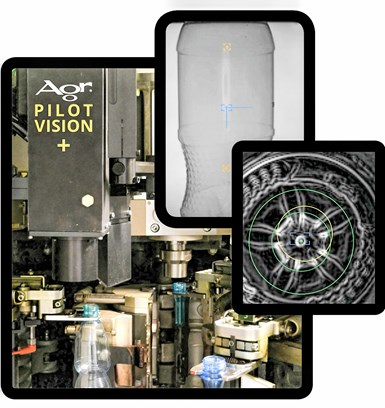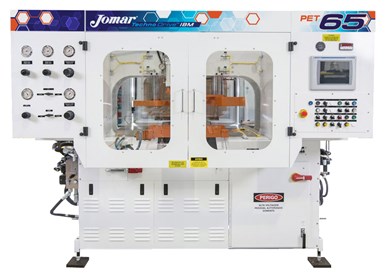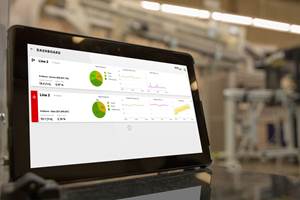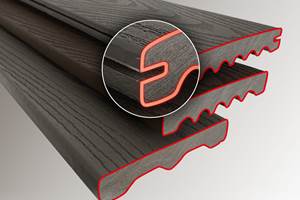With a relatively small number of blow molding machinery exhibitors willing to provide advance information, it’s difficult to discern the major trends. However, two themes stand out from data available: First, “Circular Economy” or recycling, the overarching theme of the show, will be featured in blow molding exhibits, too. Second, exhibits of PET blowing systems apparently will far outnumber those for polyolefins, PVC and other thermoplastics.
Machines for the ‘Green’ Economy
“Circular Economy” is central to Kautex’s exhibit at K. An all-electric KBB60 machine will mold a three-layer bottle from Braskem’s “I’m green” HDPE derived from sugarcane. The middle layer will be PCR consisting of foamed Braskem “green” PE. These bottles produced at the show will be reclaimed by Erema at its “Circonomic Centre” in the area outside the exhibit halls.
KHS is being a touch mysterious in saying it will present a “new PET concept” based on a juice bottle as an example. The company revealed few details, saying only that “it combines individual environmentally friendly packaging solutions in one container and thereby supports the theory of circular economy,” adding that this new PET bottle, to be presented for the first time at the K show, was designed to have “the smallest possible ecological footprint.” At the same time, this “new approach ensures a high level of product protection and a longer shelf life, in particular for sensitive beverages.” Further, KHS says it has formed a partnership with an “environmental service provider” to pursue its “strategy of reduction, recycling and reuse.”
Agr International is known for its monitoring and control solutions for PET stretch-blow molding. At K, it will show “its latest and most powerful in-the-blowmolder vision system,” Pilot Vision+. In keeping with the Circular Economy theme, this system is said to be well suited to quality management of PET bottles with high recycled (rPET) content. It can manage up to six cameras for defect detection inside the stretch-blow machine. Color preform cameras can detect color variations, while the large screen displays defects categorized by mold/spindle and defect type.

Agr’s new Pilot Vision+ provides enhanced PET-bottle defect detection with up to six cameras—including color sensing—which can be especially helpful in processing high levels of recycled PET.
Agr also highlights sustainability in showing its latest Process Pilot control system with advanced thinwall capability, introduced earlier this year. It’s recommended particularly for ultralight PET bottles, as it measures and adjusts material distribution on every bottle.
More PET Machines
Among other exhibits of PET machinery, Nissei ASB will demonstrate its new “Zero Cooling” technology that promises an average of 50% higher productivity as well as higher quality PET bottles. They key is using the second of four stations in its rotary injection stretch-blow machines for both cooling and preform conditioning. Thus, cooling of one shot overlaps with injection of the next shot. Ability to use thicker preforms with higher stretch ratios—without sacrificing cycle time—reportedly leads to stronger bottles with fewer cosmetic flaws (see May Keeping Up).
Meanwhile, FlexBlow (a brand of Terekas in Lithuania) will introduce a special “Beauty” series of its two-stage stretch-blow machines for the cosmetic containers market. It is designed to offer versatility for a variety of container shapes and neck sizes in short-run production. Complete changeover from oval narrow-neck bottles to shallow wide-mouth jars is said to take 30 min. Further, FlexBlow’s special pick-and-place system reportedly can feed any wide-mouth preform, even shallow shapes, while minimizing scratches on the preforms.
1Blow of France will be running its most popular compact two-stage machine, the two-cavity 2LO, with three new options. One is a Preferential & Offset Heating Technology Kit, which adds flexibility for producing “extreme oval containers”—even in opaque colors, and significantly offset-neck bottles once thought impossible to make by the reheat stretch-blow process. Second, a tiered-access system limits operator access to particular control functions—as little as on/off and screen-viewing access—while granting technicians full access. Third, in-machine leak testing is now available through cooperation with Delta Engineering. Delta’s UDK 45X leak tester uses high voltage to rapidly detect and reject containers with micro-cracks, while saving floor space and capital cost.

Jomar’s new TechnoDrive 65 PET injection-blow machine is its first aimed specifically at non-stretched PET bottles, vials and jars.
Jomar, a leading maker of injection-blow machines, is making an entry into non-stretched PET with its TechnoDrive 65 PET machine at K. Based on the high-speed TechnoDrive 65 unit introduced last year, this 65-ton model is aimed specifically at PET but can easily convert to run polyolefins and other resins with a change of screw and some minor adjustments.
Features tailored for PET include a more robust screw motor, high-pressure valves and built-in nozzle heaters. Some injection-blow machines require a fourth station to process PET. It’s used to temperature-condition the core rods. But the new three-station Jomar machine accomplishes this task in the ejection station, reportedly minimizing cycle times. Since injection-blown PET bottles average about 1 mm wall thickness, this machine is said to be suited to jars, vials and bottles for pharmaceuticals or cosmetics, rather than beverage bottles. At the show, it will mold eight 50-m perfume bottles.
Other Blow Molding News
For production of unusually shaped technical items, such as automotive ducts and appliance piping, ST BlowMoulding of Italy will highlight its new ASPI 200 accumulator-head suction blow molder, a smaller version of the ASPI 400 model shown at NPE2018. It’s designed to process both polyolefins and engineering resins for either complex 3D shapes or conventional 2D parts. Its hydraulic pumps have energy-saving VFD motors. To see the machine in action, the company offers to bus visitors from the fair to a training and service center in Bonn, Germany.
For packaging, both Graham Engineering and Wilmington Machinery will display their latest wheel machines—Graham’s Revolution MVP and Wilmington’s Series III B.
Industry 4.0 will also get its due at K. Kautex will be emphasizing its “new digital solutions in customer service.” It previously introduced remote troubleshooting, but is now augmenting it with ability for teams of experts to examine directly a malfunctioning or underperforming machine in a virtual environment. Kautex has also set up a new customer portal for ordering replacement parts. Kautex Spare Parts will allow users to check availability and prices and post orders.
For training purposes, Kautex’s virtual-machine control simulators have been enhanced to require operators to react appropriately to process changes. An error-free part is displayed only if the machine settings are correct.
Related Content
How Inline Vision Inspection Can Minimize Scrap in Molding
Once viewed by injection and blow molders as a necessary evil, machine vision technology today can continuously monitor and improve production while reducing costs.
Read MoreInline Inspection System for Wood Plastic Composites
Pixargus’ ProfilControl 7 DX WoodPlasticComposites measure all dimensions and geometrics, including deep grooves.
Read MoreUpgrade to Accelerated Artificial and Natural Weathering Testing
NPE2024: Atlas S³T system is designed for the company’s Weather-Ometer Ci4400 and Ci5000 instruments.
Read MoreBrabender GmbH Bought By Austrian Measurement Company
Leading metrology company Anton Paar buys 100-year old firm, known in the U.S. as C.W. Brabender.
Read MoreRead Next
Making the Circular Economy a Reality
Driven by brand owner demands and new worldwide legislation, the entire supply chain is working toward the shift to circularity, with some evidence the circular economy has already begun.
Read MoreBeyond Prototypes: 8 Ways the Plastics Industry Is Using 3D Printing
Plastics processors are finding applications for 3D printing around the plant and across the supply chain. Here are 8 examples to look for at NPE2024.
Read More














